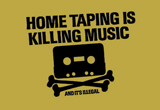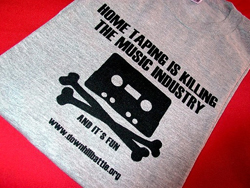 The characteristic noises of death and destruction are contrived by nature to be unpleasant. If their cause is indifferent to their creation, then our ears ensure that we read them as alarming, even terrifying.
The characteristic noises of death and destruction are contrived by nature to be unpleasant. If their cause is indifferent to their creation, then our ears ensure that we read them as alarming, even terrifying.
Certainly, this was the case with many of the records released in the wake of the introduction of CD. The sound of corporate exploitation, combined with artistic apathy, was as excruciating as it was depressing.
Perhaps most chilling was the thump of fat Filofaxes on boardroom tables as their owners discussed ‘product’ and ‘telephone’ rather than talent or investment.
When major record company execs listen out for the sounds of danger, they seem to hear something entirely different from music fans. Back in the 1970s, it was a cassette being slotted into a tape deck and Rec/Play being pushed home with the intensity of launching a nuclear attack.
Certainly, the ubiquitous compact cassette format took something from album sales, but such a simplistic analysis of domestic tape use completely missed its value as a means of making social documents, enabling sight-impaired people and the greater exposure of record company catalogues themselves.
Home taping is killing music, the biz argued. And proposed a levy on the sales of blank cassettes to offset its lost revenue. Regardless of the use of the hapless cassette – shopping lists for the blind, a child’s first words, a mother’s last…
Tape counter

The Portastudio – as Tascam dubbed its 1979 groundbreaking Teac Model 144 – was partly a reflection of technical progress and partly a reaction to the technical monopoly enjoyed by the combined recording/record business. But while one feared the loss of recording expertise, the other was terrified by its loss of power and profit. Bruce Springsteen proved its value very simply – he recorded an album on one.
‘Home taping is skill in music’ was the battle cry of the newly enabled ‘home studio’ recordist.
A crescendo of similar cries arose with it. If anything, their eloquence alone made their point. The Dead Kennedys added Home taping is killing record industry profits! We left this side blank so you can help. And Rocket from the Crypt made T-shirts with the slogan Home taping is killing the music industry: Killing ain’t wrong. There is more. And it’s worth a few moments with Wiki, if you have time.
Sampling gave the majors a golden opportunity to demonise technology, and they took it. Not only were people copying records, they were making new records from old. The Music Biz Copyright Infringement Index (MBCII) was peaking in the red.
Home computers of the time didn’t register on the MBCII, but cassettes presented a parallel problem to the formative computer gaming industry. For while games programs that were distributed on cassette carried copy protection in their code, there was no practical defence against a simple twin-deck cassette copier. For a brief moment, the two industries could have been friends…
The reality of new music distribution models sit in stark contrast to those feared by the music biz when the home cassette tape was king, however. Compact cassettes no longer have a part to play, but computers and the networks that enable them have grown into a problem of an entirely different scale.
Abandoning the MBCII, the major labels turned the spotlight on video games as the reason for declining music sales, still wilfully ignoring the consequences of their own neglect. So now they had two villains – games and copyright infringement.
But their problems remain. And the battle cry of the cassette generation lingers on.
 US Peer-to-Peer file sharing group Downhill Battle maintains that the majors’ influence over music remains damaging to music, musicians and popular culture. Home taping is killing the music industry, and it’s fun, it says. Download website Pirate Party UK is also onboard with Copyright is killing music – and it's legal. Both use the familiar ‘tape and bones’ logo.
US Peer-to-Peer file sharing group Downhill Battle maintains that the majors’ influence over music remains damaging to music, musicians and popular culture. Home taping is killing the music industry, and it’s fun, it says. Download website Pirate Party UK is also onboard with Copyright is killing music – and it's legal. Both use the familiar ‘tape and bones’ logo.
It would be easy to hope that the ‘business’ element of the music biz will go away and leave music in the hands of its creators and fans. And to some extent this has happened. But there are aspects of music recording and touring that require levels of organisation and funding beyond the reach of a grass roots music business.
Maybe we need another rallying call: Home Funding is Saving Music?






